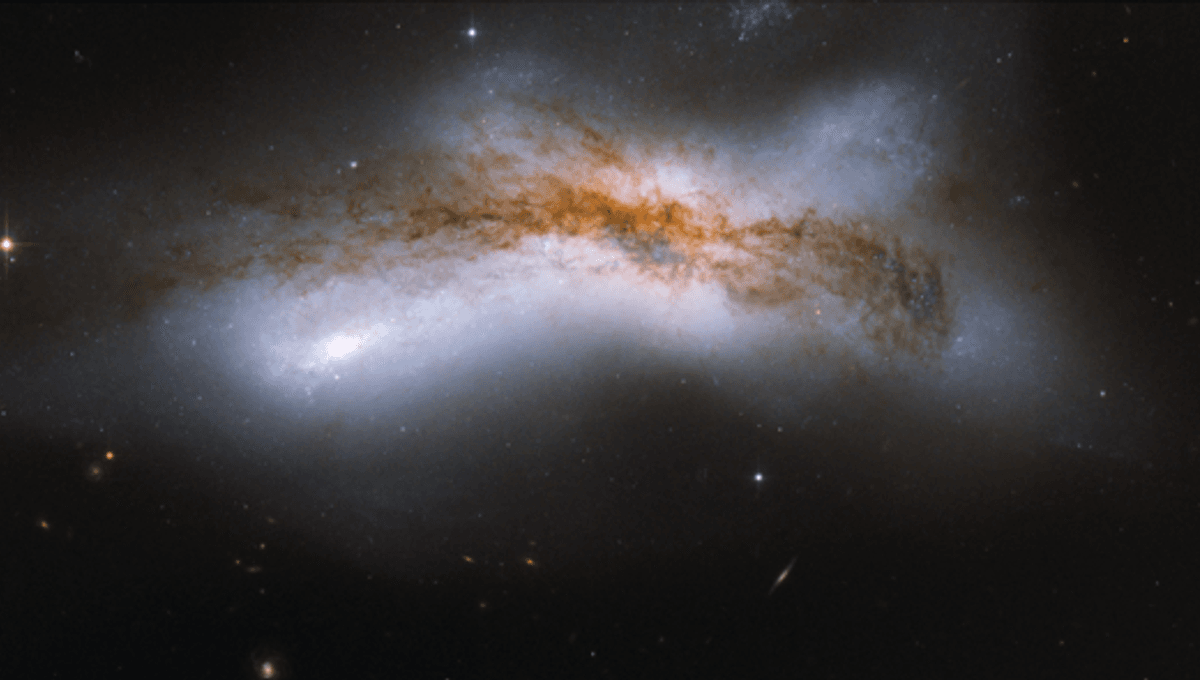-
أخر الأخبار
- استكشف
-
الصفحات
-
المدونات
-
المنتديات
Good News, The Milky Way May Not Collide With Andromeda In 5 Billion Years After All

Good News, The Milky Way May Not Collide With Andromeda In 5 Billion Years After All
The Milky Way and Andromeda are traveling towards each other; this is a fact that we have known for a long time. Over the decades, estimates of the speed and simulations have suggested that the two were going to collide within 5 billion years. But new research argues quite the opposite. A team found that there is about a 50 percent chance that the two galaxies will miss each other over the next 10 billion years.
A major merger is a collision between galaxies of roughly the same size. The end result is usually an elliptical galaxy, hardly resembling the progenitors, especially if they were spiral galaxies like the Milky Way and Andromeda. The process is slow, so stars do not start smashing into one another, but many changes take place, new stars form, and supermassive black holes get active thanks to gas being thrown towards the core. The Milky Way-Andromeda merger had been a given for a very long time. The two galaxies are moving towards each other at 100 kilometers (61 miles) per second, but they are not alone in space. Both are surrounded by dwarf galaxies, the largest of which, the Triangulum, is orbiting Andromeda. In previous work, a simulation looked at the motion of Andromeda, Triangulum, and the Milky Way to predict the future. However, that might not be enough. The new research used data from Hubble and the European Space Agency’s Gaia to include the motion of the Large Magellanic Cloud (LMC). This is the Milky Way's largest satellite, visible to the naked eye in the Southern Hemisphere. The latest data shows how much it is affecting the motion of the Milky Way. Three potential scenarios for the Milky Way and Andromeda: (top left) They bypass at 1 million light-years; (top right) at 500,000 light-years, dark matter provides friction that brings them close together; (bottom) just 100,000 light-years apart leads to a collision. Image credit: NASA/ESA “When we tried to start from the same assumptions as previous researchers, we recovered the same results,” lead author Dr Till Sawala of the University of Helsinki said in a statement. “We’ve simply been able to explore a much larger space of possibilities, taking advantage of new data. While some earlier works had focused on the interaction between the Milky Way, Andromeda, and the Triangulum galaxy, we also include the effect of the LMC.” Including the LMC in over 100,000 simulations of the system allowed them to create new visions for the future. In half of them, the Milky Way and Andromeda have a close encounter, losing enough orbital energy to eventually collide. But in most cases, that takes place in the next 8 to 10 billion years. In only 2 percent of the cases, the collision happens within 5 billion years. Though it is almost certain that the Milky Way and the LMC will merge within the next 2 billion years. “Although its mass is only around 15% of the Milky Way’s, its gravitational pull directed perpendicular to the orbit with Andromeda perturbs the Milky Way’s motion enough to significantly reduce the chance of a merger with the Andromeda galaxy,” Dr Sawala explained. “And while earlier studies only considered the most likely value for each variable, we ran many thousands of simulations, which allowed us to account for all the observational uncertainties.” In about half the cases, the dwarf galaxies' interactions set the larger galaxies on a safer path, at least for the next 10 billion years. In any case, the Sun would have turned into a white dwarf by then, and the Solar System might be radically different at that point. “These results are significant for the fate of our galaxy. It used to appear destined to merge with Andromeda forming a colossal ‘Milkomeda’. Now, there is a chance that we could avoid this fate entirely,” Professor Alis Deason of Durham University’s Institute for Computational Cosmology added. The team is upfront about the remaining uncertainties. While the Gaia mission ended this year, its data will take several more years to be fully analyzed. Thanks to that, simulations of the Local Group of galaxies can be made more accurate, and the future of the Milky Way can be worked out with more certainty. The study is published in Nature Astronomy. 


